Xueyan Liu
A Collaborative Framework Integrating Large Language Model and Chemical Fragment Space: Mutual Inspiration for Lead Design
Jul 17, 2025



Abstract:Combinatorial optimization algorithm is essential in computer-aided drug design by progressively exploring chemical space to design lead compounds with high affinity to target protein. However current methods face inherent challenges in integrating domain knowledge, limiting their performance in identifying lead compounds with novel and valid binding mode. Here, we propose AutoLeadDesign, a lead compounds design framework that inspires extensive domain knowledge encoded in large language models with chemical fragments to progressively implement efficient exploration of vast chemical space. The comprehensive experiments indicate that AutoLeadDesign outperforms baseline methods. Significantly, empirical lead design campaigns targeting two clinically relevant targets (PRMT5 and SARS-CoV-2 PLpro) demonstrate AutoLeadDesign's competence in de novo generation of lead compounds achieving expert-competitive design efficacy. Structural analysis further confirms their mechanism-validated inhibitory patterns. By tracing the process of design, we find that AutoLeadDesign shares analogous mechanisms with fragment-based drug design which traditionally rely on the expert decision-making, further revealing why it works. Overall, AutoLeadDesign offers an efficient approach for lead compounds design, suggesting its potential utility in drug design.
Incomplete Graph Learning: A Comprehensive Survey
Feb 18, 2025Abstract:Graph learning is a prevalent field that operates on ubiquitous graph data. Effective graph learning methods can extract valuable information from graphs. However, these methods are non-robust and affected by missing attributes in graphs, resulting in sub-optimal outcomes. This has led to the emergence of incomplete graph learning, which aims to process and learn from incomplete graphs to achieve more accurate and representative results. In this paper, we conducted a comprehensive review of the literature on incomplete graph learning. Initially, we categorize incomplete graphs and provide precise definitions of relevant concepts, terminologies, and techniques, thereby establishing a solid understanding for readers. Subsequently, we classify incomplete graph learning methods according to the types of incompleteness: (1) attribute-incomplete graph learning methods, (2) attribute-missing graph learning methods, and (3) hybrid-absent graph learning methods. By systematically classifying and summarizing incomplete graph learning methods, we highlight the commonalities and differences among existing approaches, aiding readers in selecting methods and laying the groundwork for further advancements. In addition, we summarize the datasets, incomplete processing modes, evaluation metrics, and application domains used by the current methods. Lastly, we discuss the current challenges and propose future directions for incomplete graph learning, with the aim of stimulating further innovations in this crucial field. To our knowledge, this is the first review dedicated to incomplete graph learning, aiming to offer valuable insights for researchers in related fields.We developed an online resource to follow relevant research based on this review, available at https://github.com/cherry-a11y/Incomplete-graph-learning.git
A Novel Neural-symbolic System under Statistical Relational Learning
Sep 16, 2023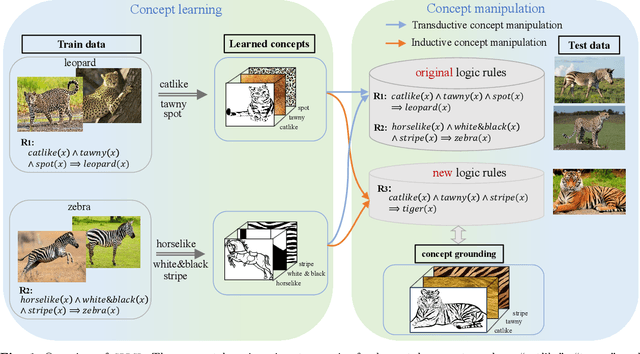

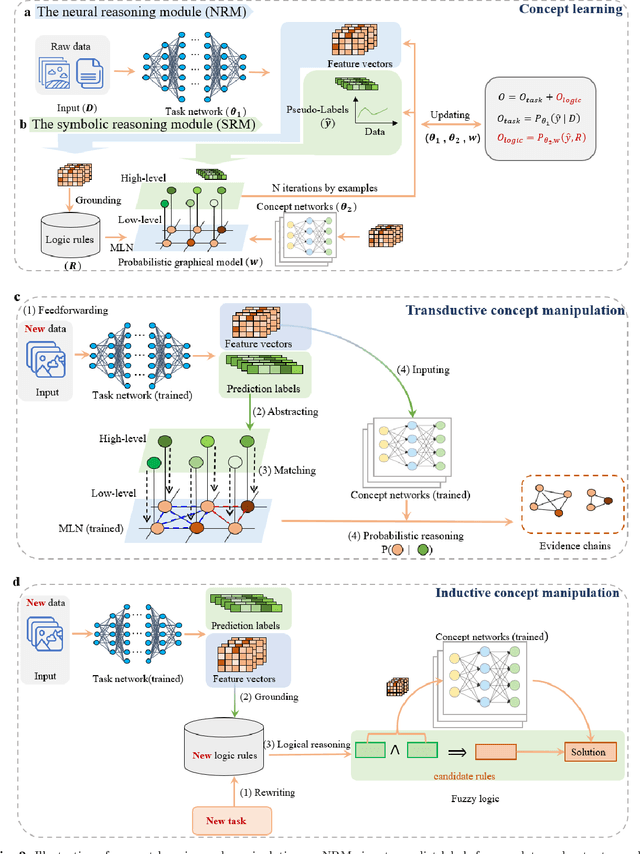
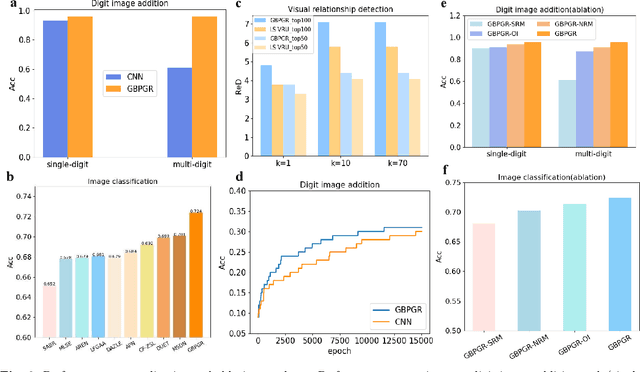
Abstract:A key objective in field of artificial intelligence is to develop cognitive models that can exhibit human-like intellectual capabilities. One promising approach to achieving this is through neural-symbolic systems, which combine the strengths of deep learning and symbolic reasoning. However, current approaches in this area have been limited in their combining way, generalization and interpretability. To address these limitations, we propose a general bi-level probabilistic graphical reasoning framework called GBPGR. This framework leverages statistical relational learning to effectively integrate deep learning models and symbolic reasoning in a mutually beneficial manner. In GBPGR, the results of symbolic reasoning are utilized to refine and correct the predictions made by the deep learning models. At the same time, the deep learning models assist in enhancing the efficiency of the symbolic reasoning process. Through extensive experiments, we demonstrate that our approach achieves high performance and exhibits effective generalization in both transductive and inductive tasks.
A Counterfactual Collaborative Session-based Recommender System
Feb 07, 2023



Abstract:Most session-based recommender systems (SBRSs) focus on extracting information from the observed items in the current session of a user to predict a next item, ignoring the causes outside the session (called outer-session causes, OSCs) that influence the user's selection of items. However, these causes widely exist in the real world, and few studies have investigated their role in SBRSs. In this work, we analyze the causalities and correlations of the OSCs in SBRSs from the perspective of causal inference. We find that the OSCs are essentially the confounders in SBRSs, which leads to spurious correlations in the data used to train SBRS models. To address this problem, we propose a novel SBRS framework named COCO-SBRS (COunterfactual COllaborative Session-Based Recommender Systems) to learn the causality between OSCs and user-item interactions in SBRSs. COCO-SBRS first adopts a self-supervised approach to pre-train a recommendation model by designing pseudo-labels of causes for each user's selection of the item in data to guide the training process. Next, COCO-SBRS adopts counterfactual inference to recommend items based on the outputs of the pre-trained recommendation model considering the causalities to alleviate the data sparsity problem. As a result, COCO-SBRS can learn the causalities in data, preventing the model from learning spurious correlations. The experimental results of our extensive experiments conducted on three real-world datasets demonstrate the superiority of our proposed framework over ten representative SBRSs.
A Block-based Generative Model for Attributed Networks Embedding
Jan 06, 2020

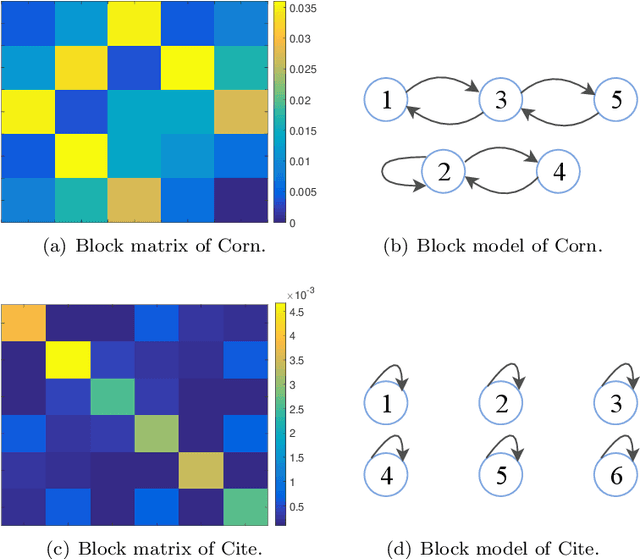
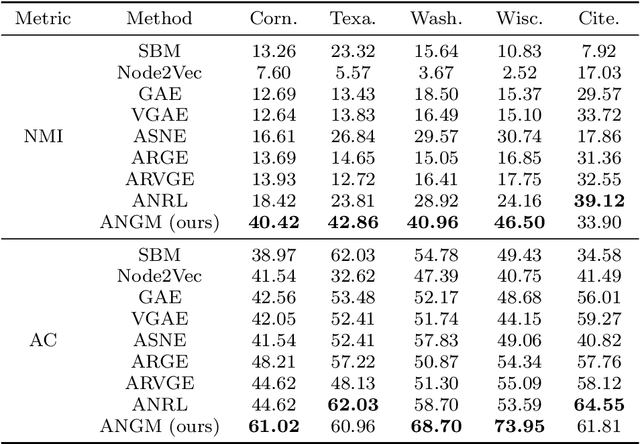
Abstract:Attributed network embedding has attracted plenty of interests in recent years. It aims to learn task-independent, low-dimension, and continuous vectors for nodes preserving both topology and attribute information. Most existing methods, such as GCN and its variations, mainly focus on the local information, i.e., the attributes of the neighbors. Thus, they have been well studied for assortative networks but ignored disassortative networks, which are common in real scenes. To address this issue, we propose a block-based generative model for attributed network embedding on a probability perspective inspired by the stochastic block model (SBM). Specifically, the nodes are assigned to several blocks wherein the nodes in the same block share the similar link patterns. These patterns can define assortative networks containing communities or disassortative networks with the multipartite, hub, or any hybrid structures. Concerning the attribute information, we assume that each node has a hidden embedding related to its assigned block, and then we use a neural network to characterize the nonlinearity between the node embedding and its attribute. We perform extensive experiments on real-world and synthetic attributed networks, and the experimental results show that our proposed method remarkably outperforms state-of-the-art embedding methods for both clustering and classification tasks, especially on disassortative networks.
 Add to Chrome
Add to Chrome Add to Firefox
Add to Firefox Add to Edge
Add to Edge